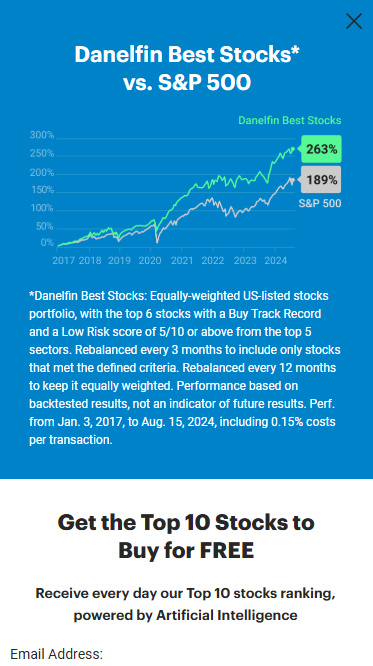The security and privacy of trading platforms based on AI are vital, considering that they handle financial and personal data. An attack on data or misuse can cause significant financial loss as well as reputational damage. These are the top ten suggestions to help you assess the security and privacy features of these platforms.
1. Take into consideration encryption of data
Encryption while in transit: Make sure the platform is using secure protocols (e.g. TLS/SSL) to secure information transferred between your devices and their servers.
Security in the rest: Verify that sensitive data stored on platform servers is encrypted using strong encryption standards.
End-to-end encrypted communications: Make sure the platform you are using provides encryption that is complete for sensitive data.
2. Review the Authentication Methods
Two-factor authentication (copyright) Check if the platform supports copyright to add an extra layer of security.
Check the biometric authentication options for mobile apps (e.g. facial recognition, fingerprint).
Password policy - Make sure that the platform enforces strict policies regarding passwords (e.g. length requirements, complexity requirements).
3. Verify compliance with the regulations.
Financial regulations: Ensure your platform is compliant with all relevant financial laws (e.g. SEC FINRA MiFID II).
Data protection laws: Ensure compliance with privacy laws (e.g. GDPR, GDPR, CCPA) If you're in or trading with regions that are covered by these laws.
Audit certifications. Find out if the platform is certified by security third-party assessments or is certified (e.g. SOC 2 and ISO 27001).
4. Review the Data Access Controls
Role-based access: Ensure the platform has access control based on role (RBAC) to restrict access to data to only authorized users.
Check if you are able to set permissions at granular levels for different team members.
Activity monitoring: Find out whether the platform monitors and logs user activity for suspicious behavior.
5. Assess Vulnerability Assessment
Regular updates: Ensure that your platform is updated with software regularly in order to fix any weaknesses.
Testing for penetration: Examine to find out if your platform is regularly tested for penetration to help it discover and rectify security flaws.
Bug bounty programs: Check whether your platform is part of a program that rewards external security experts for reporting security issues.
6. Evaluate Data Privacy Policies
Transparency: Go through the platform's privacy policy to know how your personal information is used, gathered, and shared.
Data minimization: Make sure the platform only collects information necessary to its functionality.
Third-party Sharing: Determine if the platform shares data with third-parties and, if it does and under what conditions.
7. Check for Secure API Use
API security: Ensure the platform's API has secure authentication methods (e.g., OAuth, API keys) and secures data exchanges.
Rate-limiting: Check if the API has a limit on rate to stop abuse and brute force attacks.
Verify whether the platform has recorded API access to monitor and auditing, as well as reporting.
8. Examine the reaction to an incident and recovery
Incident response plan: Ensure the platform has an plan for responding to incidents such as security breaches or data breaches.
Notification policies: Verify whether the platform informs users promptly in the event of a security breach.
Backups of data - Make sure the platform has a plan for disaster recovery and regularly backs the data up.
9. Evaluation of Physical Security Measures
Security of the data center Security of servers: Ensure that the servers on your platform are located in data centers that are equipped with physical security measures like security and access controls.
Redundancy Verify that the platform is using redundant systems to store information in the event of hardware failures.
Geographic distribution: To increase resilience, verify that the data is distributed across several geographic locations.
10. Privacy controls for users to test
Data deletion: Make sure the platform allows you to delete your data permanently if you decide to stop using the service.
Privacy settings: Check if there are privacy settings that permit you to limit the information shared and visible.
Check the anonymization of data for analytics and machine learning.
Bonus Tips
Reputation and feedback from users Review user reviews and feedback in order to gauge the reputation of the platform in terms of privacy and security.
Trial period: Test the security and privacy tools of the platform using a a free demo.
Customer support: Make sure that the platform provides robust customer support for security-related concerns or issues.
These suggestions will assist you to assess the security and privacy of AI trading platforms that forecast or analyze price of stocks. Your financial and personal information will be secure. Secure platforms not just protect your assets, but it will also create confidence and trust in the products. Follow the top rated look what I found about AI stock trading app for website tips including best ai for trading, ai for stock predictions, AI stock market, trading with ai, stock ai, AI stock picker, best ai for trading, ai trading tools, ai for investment, ai investment platform and more.

Top 10 Tips On Risk Management Of Ai Trading Platforms That Can Predict Or Analyze The Price Of Stocks.
A platform for trading that makes use of AI to analyze and predict stocks should have a robust risk management process. This can protect your capital investment and limit any losses that could occur. Platforms that have robust risk management tools will help you navigate uncertain market conditions and make informed decisions. Here are 10 suggestions on how you can evaluate the platform's risk management capabilities.
1. Examine Stop-Loss and Take Profit Features
Flexible levels: Ensure that the platform allows you to determine take-profit and stop-loss limits for each trade or strategy.
Make sure the platform is able to allow for trails stops. They automatically adapt themselves when market moves in your favor.
Check if your platform allows you to put stop-loss order which guarantee closing the trade at the price you have specified, even in unstable markets.
2. Instruments for assessing position Size
Fixed amount: Ensure the platform permits you to determine the size of your position based on a fixed monetary amount.
Percentage of Portfolio Find out whether it is possible to define the size of your position as a percentage of your portfolio total in order to manage risks in a proportional way.
Risk-reward ratio: Check if the platform supports setting risk-reward ratios for individual strategies or trades.
3. Look for Diversification Support
Multi-asset Trading to diversify your portfolio of investments, be sure that the trading platform you choose can handle trading in a variety of asset classes.
Sector allocation: Check whether the platform has tools for monitoring and managing the exposure of sectors.
Geographic diversification. Examine if your platform allows you to trade in international markets. This will help spread the geographic risk.
4. Review leverage control and margins.
Margin requirement: Ensure that the platform clearly discloses any margin requirements applicable to leveraged trades.
Check for limits on leverage. You can use this feature to limit the risk you take.
Margin call: Ensure whether the platform provides timely notification for margin calls. This can help to keep accounts from being closed.
5. Assess the risk Analytics Reporting
Risk metrics: Ensure that the platform provides important risk indicators to your portfolio (e.g. Value at Risk (VaR), sharpe ratio, and drawdown).
Scenario analysis: Find out if the platform allows you to simulate various market scenarios in order to evaluate possible risks.
Performance reports - Verify that the platform provides detailed performance reporting, including return adjustments for risk.
6. Check for Real-Time Risk Monitoring
Monitoring your portfolio: Make sure that the platform offers real-time monitoring of the risk exposure to your portfolio.
Alerts: Check if you are receiving real-time notifications regarding events that are at risk (e.g. Stop-loss triggers, breach of margins).
Review the dashboards for risk. If you're looking to see a complete picture of your risk, make sure they're customizable.
7. Testing of Backtesting and Stress Evaluation
Stress testing - Make sure that your platform allows you to stress test strategies and portfolios under extreme market conditions.
Backtesting. Check whether the platform permits backtesting, which involves the use of data from the past to determine risk and performance.
Monte Carlo Simulators: Verify whether the platform uses Monte Carlo models to model possible outcomes and assess risks.
8. Risk Management Regulations Compliance Assessment
Check for regulatory compliance: Verify that the platform's compliance with the relevant Regulations on Risk Management (e.g. MiFID II for Europe, Reg T for the U.S.).
Best execution: Check if the platform follows the most efficient execution method, which guarantees that transactions are executed at the best price to avoid any chance of slippage.
Transparency: Verify that the platform offers transparency and clear disclosures of the risks.
9. Check for User-Controlled Risk Parameters
Custom risk rules: Ensure that the platform you select permits you to develop customized risk management rules.
Automated risk management: Make sure that the platform is able to enforce the risk management guidelines automatically, based on your predefined guidelines.
Manual overrides: Make sure that your platform allows manual overrides in emergency situations.
Reviews of User Feedback and Case Studies
User reviews: Research reviews from users to assess the effectiveness of the platform in assessing risk.
Case studies Find cases studies or testimonials that show the platform's capability to control risks.
Forums for communities Find out if there's an active group of traders that share advice and strategies for managing risk.
Bonus Tips:
Free Trial: Get a free trial of the features of the platform to manage risk in real situations.
Customer support: Ensure you have a reliable support system in relation to risk management issues or questions.
Educational resources: See whether there are any educational resources available on best practices in managing risk.
With these suggestions, you can effectively assess the potential risk management capabilities of AI trading platforms that predict or analyze stocks and ensure you select the one that can to protect your capital and limit the possibility of losses. It is crucial to have robust risk-management tools for navigating the volatile markets. Read the most popular on the main page about how to use ai for copyright trading for blog info including ai for trading stocks, best ai penny stocks, stock trading ai, ai investment tools, best ai penny stocks, best ai trading platform, ai in stock market, best AI stocks to buy now, chart ai trading, ai share trading and more.
